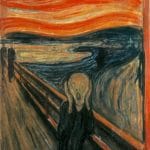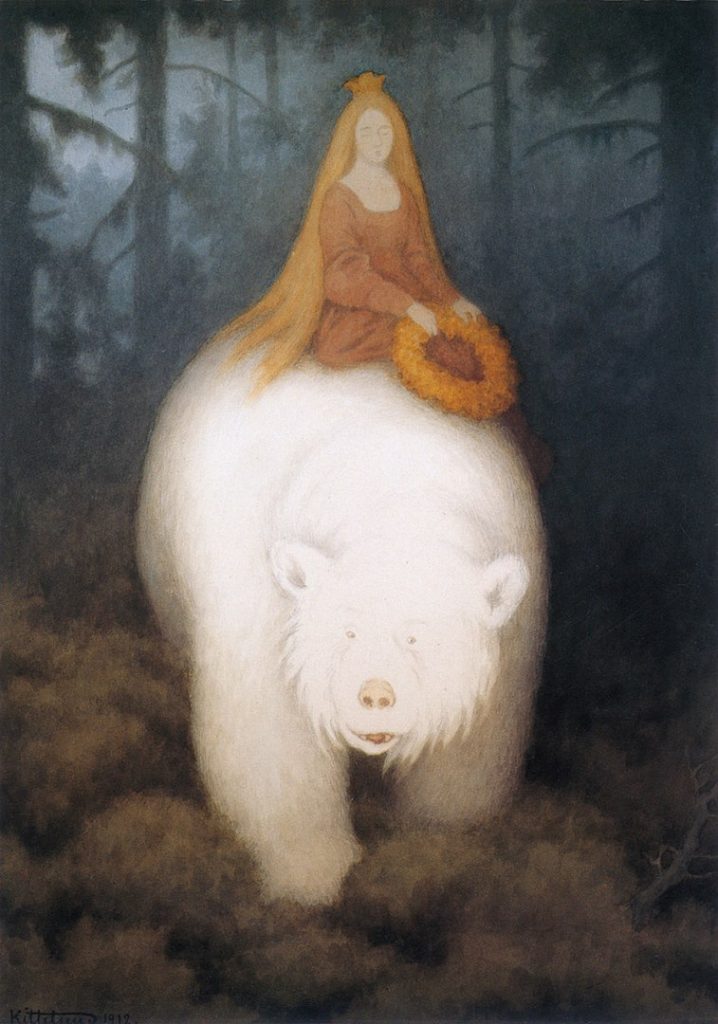
Theodor Kittelsen, a Norwegian painter and illustrator, left an indelible mark on the art world with his enchanting depictions of Norwegian folklore, fairy tales, and nature. Born on April 27, 1857, in Kragerø, Norway, Kittelsen’s artistic journey unfolded against the country’s rich cultural and natural landscape. His distinctive style, characterized by a fusion of fantasy and reality, established him as a key figure in Norwegian art during the late 19th and early 20th centuries.
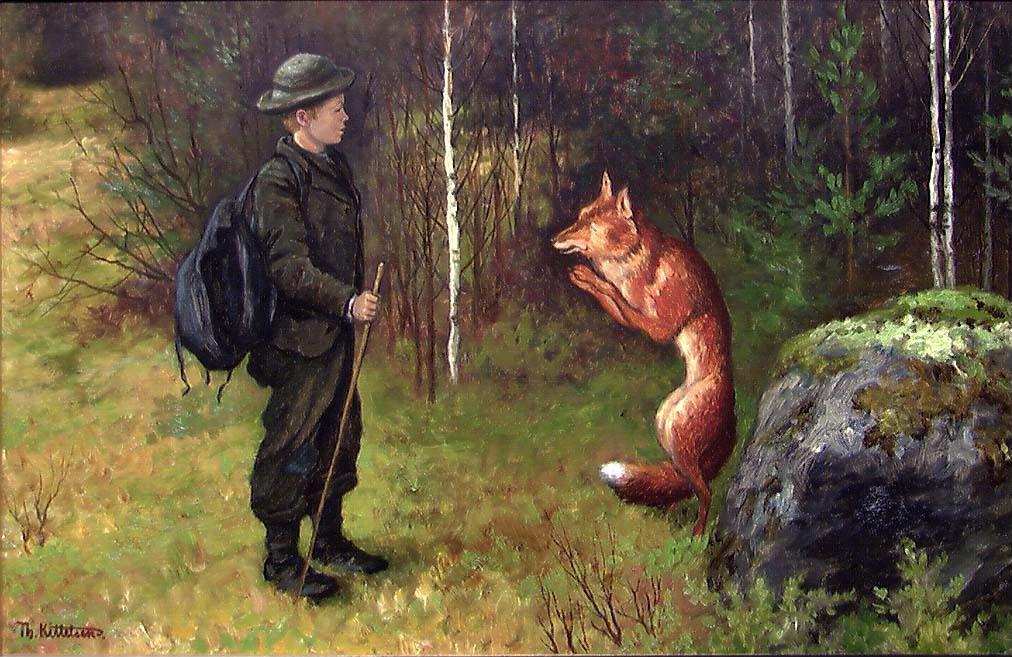
Kittelsen’s early years were marked by a deep connection to nature and a fascination with the mythical narratives of Norwegian folklore. Growing up in the countryside, he keenly appreciated the natural beauty and rich tapestry of stories that permeated Norwegian traditions. Kittelsen’s artistic inclinations became evident at a young age, and his talent did not go unnoticed.
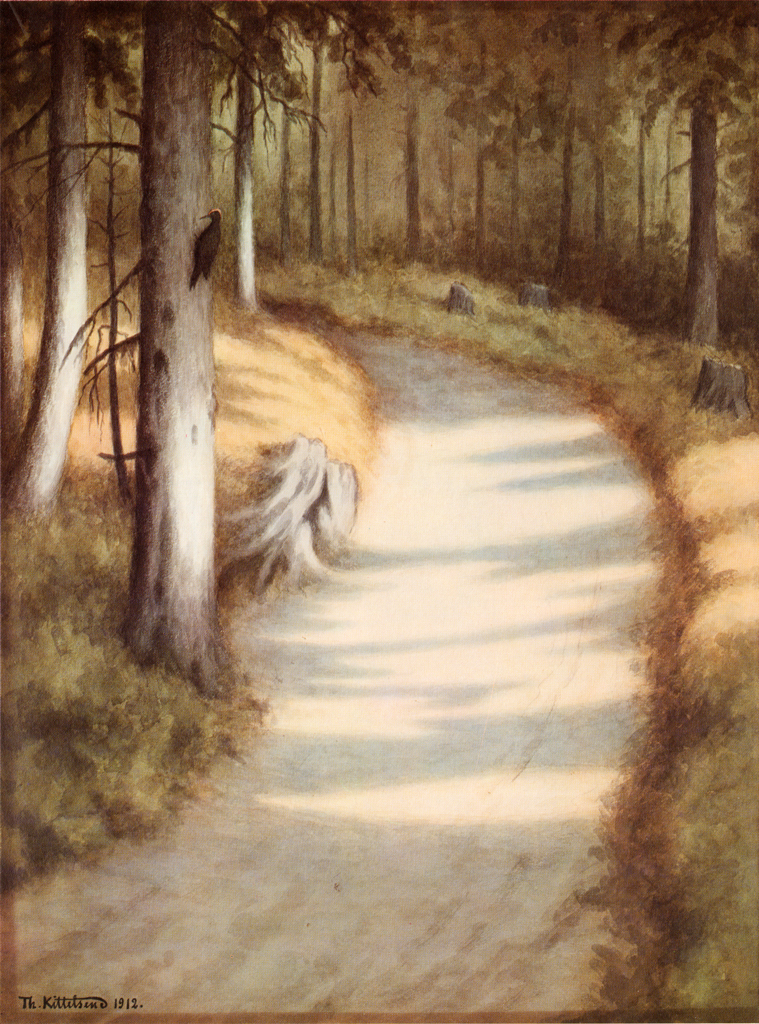
In 1874, Kittelsen enrolled at the Royal School of Art and Design in Oslo, where he received formal training in painting and illustration. His education provided him with the technical skills and academic foundation necessary for his artistic pursuits. However, Kittelsen’s unique vision and inclination towards imaginative storytelling set him apart from his contemporaries.
“Norwegian Folktales”
Kittelsen’s breakthrough came with his collaboration with the writer Peter Christen Asbjørnsen on the publication of “Norwegian Folktales” (“Norske Folkeeventyr”). Asbjørnsen and Jørgen Moe had collected and compiled traditional Norwegian folktales, and Kittelsen’s illustrations brought these narratives to life. His ability to capture the essence of folklore through visual storytelling earned him recognition, and his illustrations became inseparable from the cultural understanding of these timeless tales.
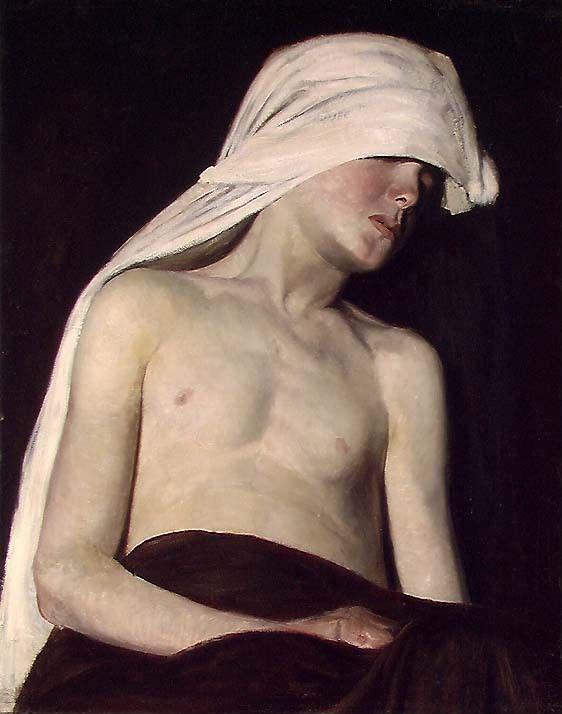
One of Kittelsen’s most iconic works is the illustration for the folktale “The Boy Who Had an Eating Match with a Troll.” The image, featuring the boy defiantly facing the troll while engaged in an eating contest, encapsulates Kittelsen’s ability to infuse magic and wonder into the ordinary. His illustrations became synonymous with the imaginative realms of Norwegian folklore, contributing to the popularization of these stories.
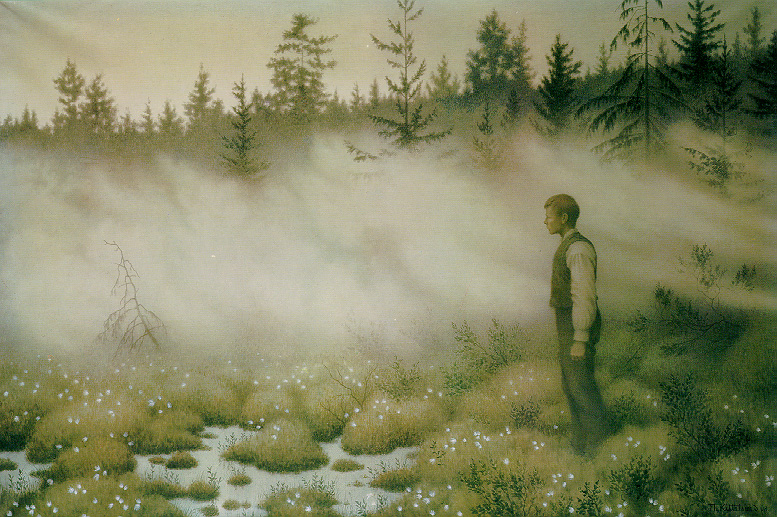
Kittelsen’s fascination with folklore extended beyond illustrations to his paintings. He began to create evocative scenes inspired by the myths and legends that had captured his imagination. His paintings often featured trolls, elves, and other supernatural beings, rendered with a combination of whimsy and a touch of melancholy. Kittelsen’s exploration of these themes established him as a pioneer in the genre of fantasy art.
The artist’s deep connection to nature found expression in his landscape paintings. Kittelsen’s portrayals of the Norwegian countryside conveyed a profound appreciation for the natural world. His ability to capture the play of light, the changing seasons, and the atmospheric beauty of the landscapes demonstrated a mastery of both technique and emotional resonance.
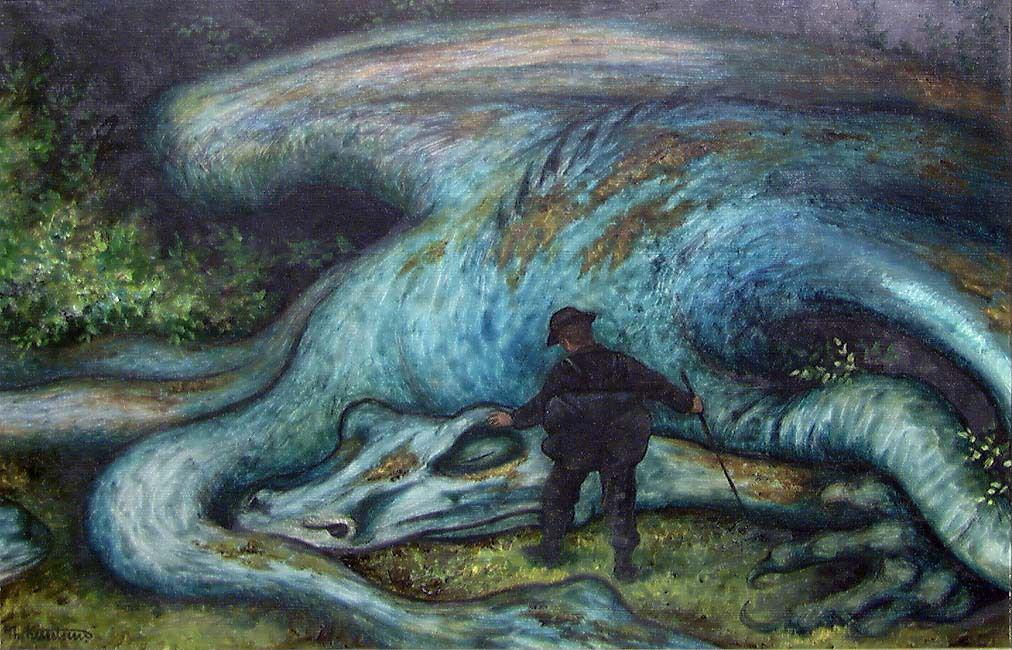
In 1887, Kittelsen published his own collection of illustrations and verses titled “Troldskab” (“Magic”). This work showcased his multifaceted talent, featuring both his imaginative illustrations and poetic writings. “Troldskab” further solidified Kittelsen’s reputation as a leading artist who could seamlessly weave together visual and literary elements to create immersive and enchanting worlds.
Kittelsen’s connection to the literary world extended beyond his collaborations with folklorists. He illustrated works by notable Norwegian authors such as Henrik Ibsen and Jonas Lie, contributing visual interpretations that complemented the narrative depth of these literary giants. His illustrations for Ibsen’s play “Peer Gynt” captured the essence of the characters and themes, adding a visual layer to the iconic work.
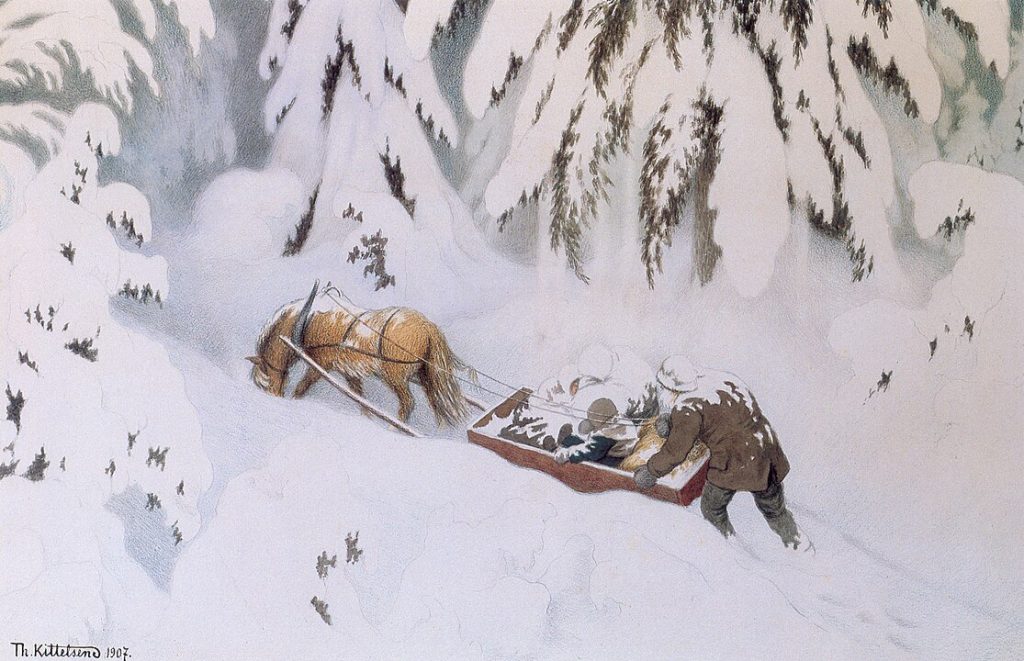
Despite his success and recognition, Kittelsen faced financial challenges throughout his life. He struggled with the demands of supporting a growing family, and the need for consistent income led him to take on various commercial projects. Kittelsen worked as an illustrator for magazines, newspapers, and book covers, showcasing his adaptability and versatility as an artist.
In 1899, Kittelsen moved to the small village of Sigdal, seeking solace and inspiration in the tranquil Norwegian countryside. The move marked a shift in his artistic focus, with an increased emphasis on landscapes and a departure from the fantastical themes that had defined much of his earlier work. Kittelsen’s later paintings, often featuring the rugged beauty of Sigdal, reflected a more contemplative and introspective phase in his artistic career.
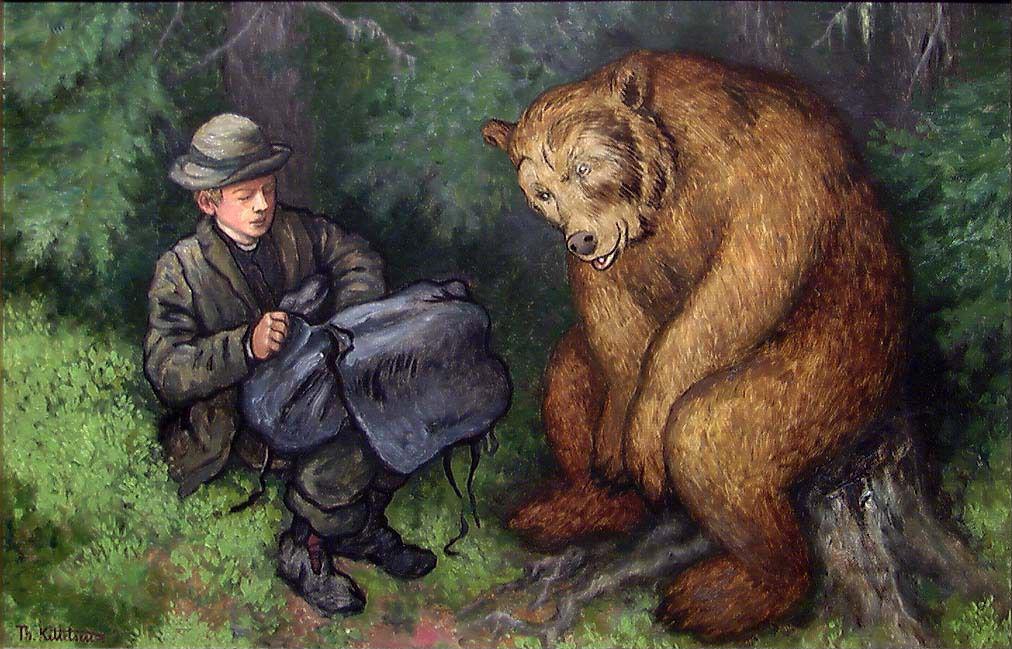
As the 20th century dawned, Kittelsen’s health began to decline. He faced challenges related to alcoholism and financial strain, leading to periods of hardship. Despite these difficulties, he continued to produce art, finding solace and inspiration in the natural surroundings of Sigdal. Kittelsen’s later works, including his landscapes and depictions of rural life, conveyed a sense of quiet introspection.
Fantastic Folklore
Theodor Kittelsen passed away on January 21, 1914, in Hallingdal, Norway. His legacy endures through his imaginative illustrations, fantastical paintings, and contributions to the preservation of Norwegian folklore. Kittelsen’s influence can be seen in the continued popularity of his illustrations, which remain iconic representations of Norwegian fairy tales and myths.
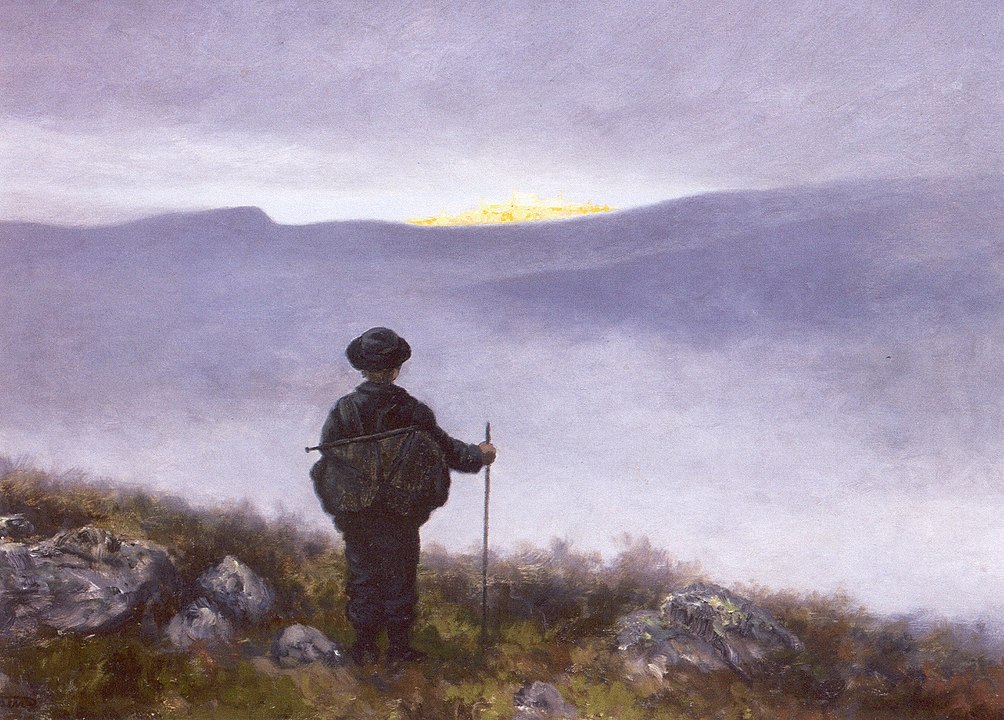
In recognition of Kittelsen’s significant contributions to Norwegian art and culture, the Kittelsen Museum was established in Blaafarveværket, Norway. The museum houses a comprehensive collection of his works, providing visitors with an opportunity to immerse themselves in the enchanting worlds he created. Kittelsen’s art continues to captivate audiences, inviting them to explore the intersection of fantasy and reality, folklore and nature, in the hands of a visionary artist whose legacy transcends time.


